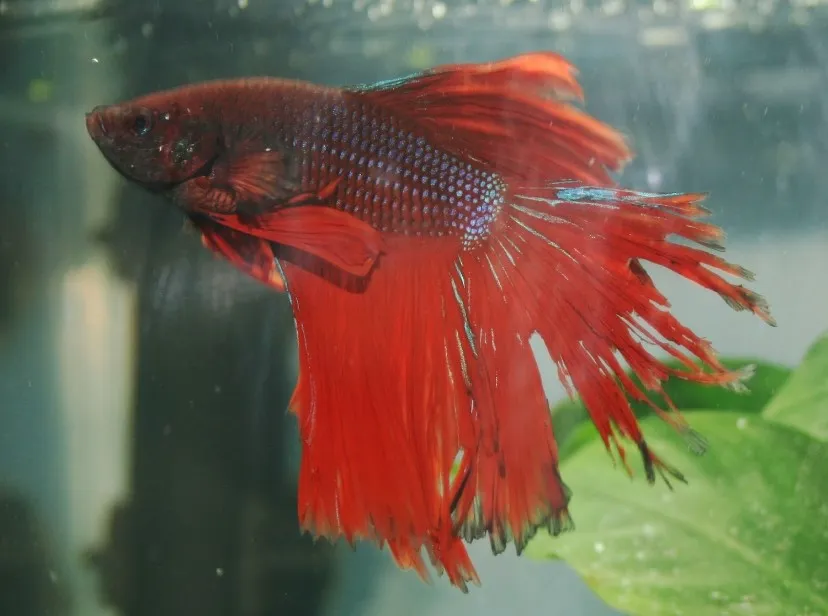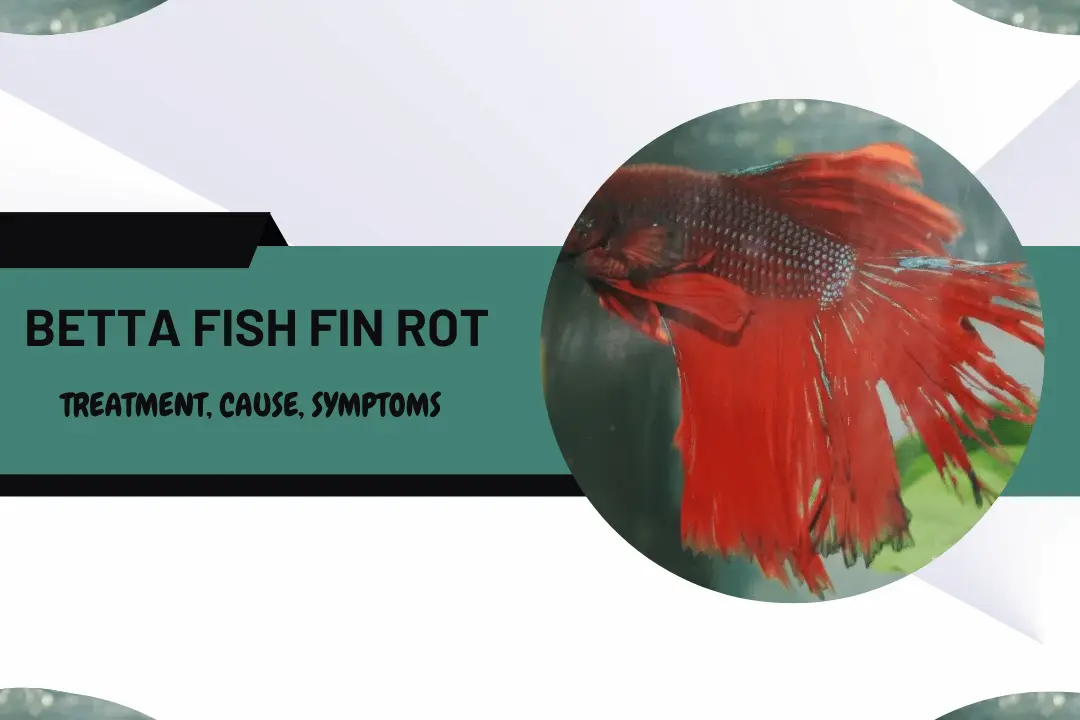Fin rot is a common health issue affecting betta fish, causing damage to their beautiful fins. If left untreated, fin rot can lead to severe consequences, including infection, stress, and even death. As a responsible betta fish owner, it’s essential to recognize the signs of fin rot and take prompt action to treat and prevent it. In this article, we’ll delve into the causes, symptoms, and treatment options for fin rot in betta fish.
— Peter Drucker
What is Fin Rot in Betta Fish?

Fin rot, also known as fin necrosis, is a bacterial or fungal infection that affects the fins of betta fish. It causes the fins to decay, leading to fraying, tearing, or complete loss. Fin rot can be caused by various factors, including poor water quality, bacterial infections, and physical damage. Understanding the difference between fin rot and fin nipping is crucial for proper diagnosis and treatment.
Causes of Fin Rot
Fin rot in betta fish can be caused by a combination of factors. Understanding these causes is crucial for prevention and treatment.
Poor Water Quality
- Regular water changes (30-50% every 1-2 weeks) are essential to maintain clean and healthy water.
- High levels of ammonia, nitrite, or nitrate can cause stress, making betta fish more susceptible to fin rot.
- Inadequate filtration, poor tank maintenance, or overcrowding can contribute to poor water quality.
Bacterial Infections
- Bacteria like Flavobacterium, Flexibacter, and Aeromonas can cause fin rot.
- Open wounds or cuts on the betta’s fins can provide an entry point for bacteria.
- Weakened immune systems can make betta fish more prone to bacterial infections.
Physical Damage
- Injuries from fighting, netting, or sharp decorations can lead to fin rot.
- Fin nipping by tankmates can also cause physical damage.
- Rough handling or poor netting techniques can damage the betta’s fins.
Nutritional Deficiencies
- A balanced diet rich in protein sources (insects, crustaceans, or fish meat) and essential nutrients (vitamins, minerals) is crucial for betta fish health.
- Lack of proper nutrition can weaken the betta’s immune system, making them more susceptible to fin rot.
Stress and Overcrowding
- Stressful conditions like overcrowding, loud noises, or sudden changes can weaken the betta’s immune system.
- Overcrowding can lead to fin nipping, stress, and increased risk of fin rot.
- Provide a peaceful and spacious environment for your betta fish, with plenty of hiding places and visual barriers.
Symptoms of Fin Rot
Fin rot can manifest in various ways, and recognizing its symptoms is crucial for early detection and treatment. One of the first visible signs of fin rot is fraying or ragged edges on the fins. As the condition progresses, the fins may become torn or split, leading to a disfigured appearance. In addition to physical damage, fin rot can also cause discoloration or darkening of the affected fins, turning them gray, black, or white.
In severe cases, fungal growth may appear on the affected fins, resembling cotton-like tufts. If left untreated, fin rot can lead to the complete loss of the affected fin, causing significant distress to the betta fish. Moreover, fin rot can also lead to secondary symptoms such as lethargy or loss of appetite, as the infection takes hold. Infected betta fish may become lethargic, hiding more frequently or losing interest in food.
Respiratory distress is another common symptom of fin rot, characterized by rapid breathing or labored breathing. In some cases, infected betta fish may exhibit abnormal behavior, such as rapid swimming or erratic movement, indicating visible signs of pain or discomfort. By monitoring your betta fish closely and recognizing these symptoms, you can take prompt action to treat fin rot and prevent further complications.
Betta Fish Fin Rot Treatment
Fin rot in betta fish is a common yet treatable condition, but the approach to treatment depends on the severity of the infection. Understanding the stage of fin rot is crucial to ensure that your betta receives the appropriate care. Below, we outline a detailed treatment plan based on the progression of fin rot, from mild to severe cases.
| Fin Rot Severity | Symptoms | Treatment |
|---|---|---|
| Mild | Slight fraying, discoloration | Water changes, salt bath |
| Moderate | Increased damage, lethargy | Quarantine, mild medication (Melafix) |
| Severe | Fins severely deteriorated | Strong medication (Kanaplex, Maracyn) |
Mild Fin Rot
In the early stages, fin rot may manifest as slight fraying or discoloration at the edges of the fins. This is often caused by poor water conditions or minor injuries but can be treated effectively with basic interventions.
Symptoms:
- Fin edges appear slightly frayed or torn.
- Minor discoloration, often black or white along the fin edges.
Steps to Treat Mild Fin Rot:
- Improve Water Quality: Perform daily 25-50% water changes to maintain pristine water conditions.
- Aquarium Salt Bath (optional): Use a salt bath (1 tsp per gallon) for 10-15 minutes once a day, for 5-7 days.
- Monitor Fin Healing: Watch for signs of clear or white tissue forming along the fin edges, which indicates regrowth.
Moderate Fin Rot
When fin rot progresses, you may notice more fraying, fin deterioration, and discoloration. At this stage, the infection has spread deeper, requiring more intervention. Moving your betta to a quarantine tank is essential to prevent the spread of infection and provide a controlled environment.
Symptoms:
- Significant fraying and discoloration of the fins.
- Possible lethargy or reduced activity.
Steps to Treat Moderate Fin Rot:
- Quarantine the Betta: Move the fish to a quarantine tank with clean, heated water to reduce the risk of spreading the infection.
- Use Antibacterial Medication: Administer medications like API Melafix or Bettafix to combat bacterial infections. Follow the dosage for 5-7 days.
- Daily Water Changes: Perform daily water changes in the quarantine tank to ensure a healthy environment for recovery.
- Observe Healing: Check for early signs of fin regeneration, such as a transparent or white edge along the fins.
Severe Fin Rot
In severe cases, fin rot may significantly affect the betta’s fins, with the infection advancing close to the body. The edges of the fins will be heavily discolored, and the fish may show signs of lethargy or loss of appetite. Immediate isolation in a quarantine tank with excellent water quality is necessary.
Symptoms:
- Fins are extensively damaged, with fraying reaching close to the body.
- The betta may appear lethargic, with loss of appetite or general inactivity.
Steps to Treat Severe Fin Rot:
- Immediate Quarantine: Place your betta in a clean, separate quarantine tank with conditioned water.
- Use Strong Medications: For severe infections, use Kanaplex or Maracyn, following the instructions for at least 5-7 days.
- Daily Water Changes: Perform 50% water changes daily in the quarantine tank to maintain excellent water quality.
- Monitor Progress: Watch for behavioral improvements (increased activity and appetite) and early signs of fin regrowth.
How to Prevent Betta Fish Fin Rot
Preventing fin rot starts with maintaining a clean, stress-free environment and ensuring your betta is healthy and strong. Below are the key steps you can take to protect your betta from fin rot.
Maintain Optimal Water Quality
The number one cause of fin rot is poor water conditions. Betta fish are particularly sensitive to ammonia, nitrite, and nitrate levels in their water. Keeping the water clean and well-maintained is critical to preventing fin rot.
Tips for maintaining water quality:
- Regular water changes: Perform 20-30% water changes weekly for tanks with a filter, and more frequently for smaller or unfiltered tanks.
- Use a water conditioner: Always add a water conditioner when performing water changes to neutralize harmful chlorine, chloramines, and heavy metals in tap water.
- Test water regularly: Use a water testing kit to monitor ammonia, nitrite, and nitrate levels. Ideal water parameters for bettas are:
- Ammonia: 0 ppm
- Nitrite: 0 ppm
- Nitrate: <20 ppm
- pH: 6.5 – 7.5
- Water temperature: 76°F to 82°F (24°C to 28°C)
Filtration:
Using a gentle filter in your betta’s tank helps to remove toxins, debris, and waste, keeping the water cleaner for longer. However, make sure the filter’s flow is not too strong, as bettas prefer calmer waters.
Avoid Overcrowding and Aggression
Betta fish are naturally territorial and aggressive, particularly with other males or species that have similar long, flowing fins. Overcrowded tanks or tanks with incompatible tankmates can lead to fights, fin nipping, and increased stress—factors that contribute to fin rot.
Recommendations:
- Keep bettas alone or with compatible species: Bettas thrive in solitude but can be kept with peaceful species like snails or small, non-fin-nipping fish (e.g., corydoras).
- Tank size: Bettas should be housed in tanks of at least 5 gallons. A larger tank helps reduce stress by giving your betta ample space to explore.
- Provide hiding spots: Use decorations like plants, caves, or betta hammocks to create safe areas for your betta to retreat and feel secure.
Feed a Nutritious, Balanced Diet
A healthy immune system is your betta’s first line of defense against infections like fin rot. Feeding your betta a balanced diet rich in protein and vitamins ensures they have the nutrients needed to fight off harmful bacteria and stay healthy.
Feeding tips:
- High-quality betta pellets: Choose a pellet brand specifically formulated for betta fish, as they contain the necessary proteins and nutrients.
- Incorporate variety: Offer frozen or live foods such as bloodworms, brine shrimp, or daphnia as occasional treats to enhance their diet.
- Avoid overfeeding: Overfeeding leads to uneaten food decaying in the tank, which can increase ammonia levels and compromise water quality. Feed your betta small amounts 1-2 times a day, only what they can consume in 2 minutes.
Prevent Stress
Stress weakens your betta’s immune system, making them more susceptible to infections like fin rot. Betta fish can become stressed from poor water conditions, sudden changes in their environment, or aggressive tankmates.
How to reduce stress:
- Stable water temperature: Sudden fluctuations in water temperature can cause shock. Keep the water within the recommended range (76°F to 82°F) using a reliable aquarium heater.
- Gentle lighting: Bettas do not need intense lighting. Use soft lighting and keep the tank away from direct sunlight to avoid overheating.
- Tank cleanliness: Regularly remove uneaten food, waste, and decaying plant matter from the tank to prevent the buildup of harmful bacteria.
Check for Signs of Fin Rot Early
Regularly monitoring your betta’s fins is crucial to catching fin rot in its early stages. The earlier you spot the symptoms, the easier it is to treat. Make it a habit to check your betta’s fins for any signs of fraying, discoloration, or unusual behavior (such as loss of appetite or lethargy).

